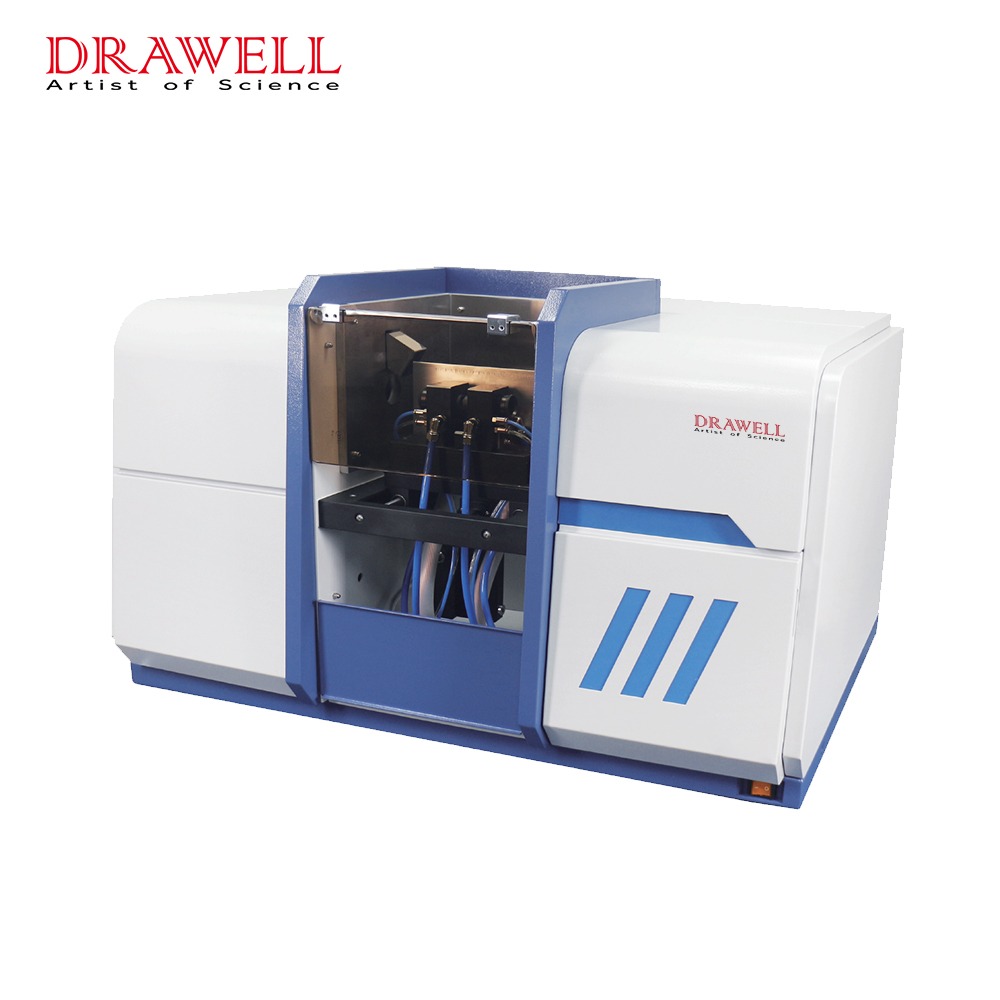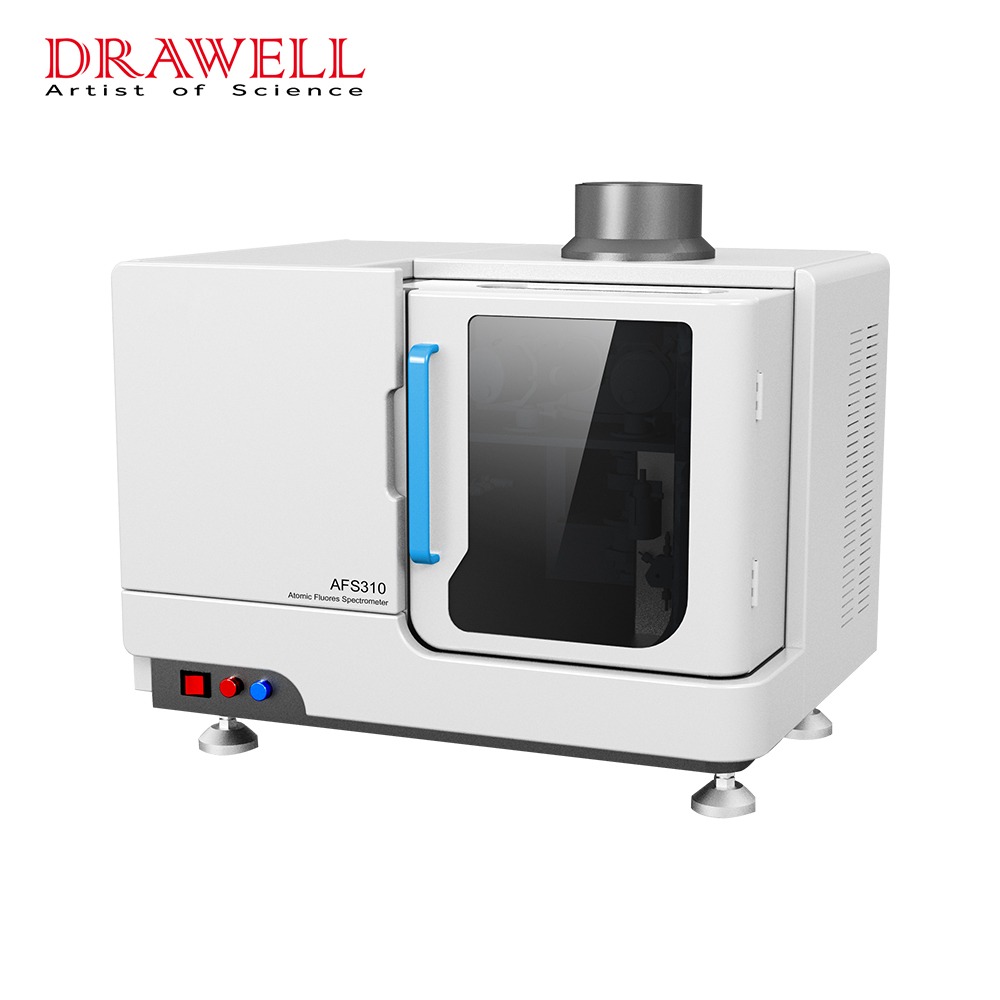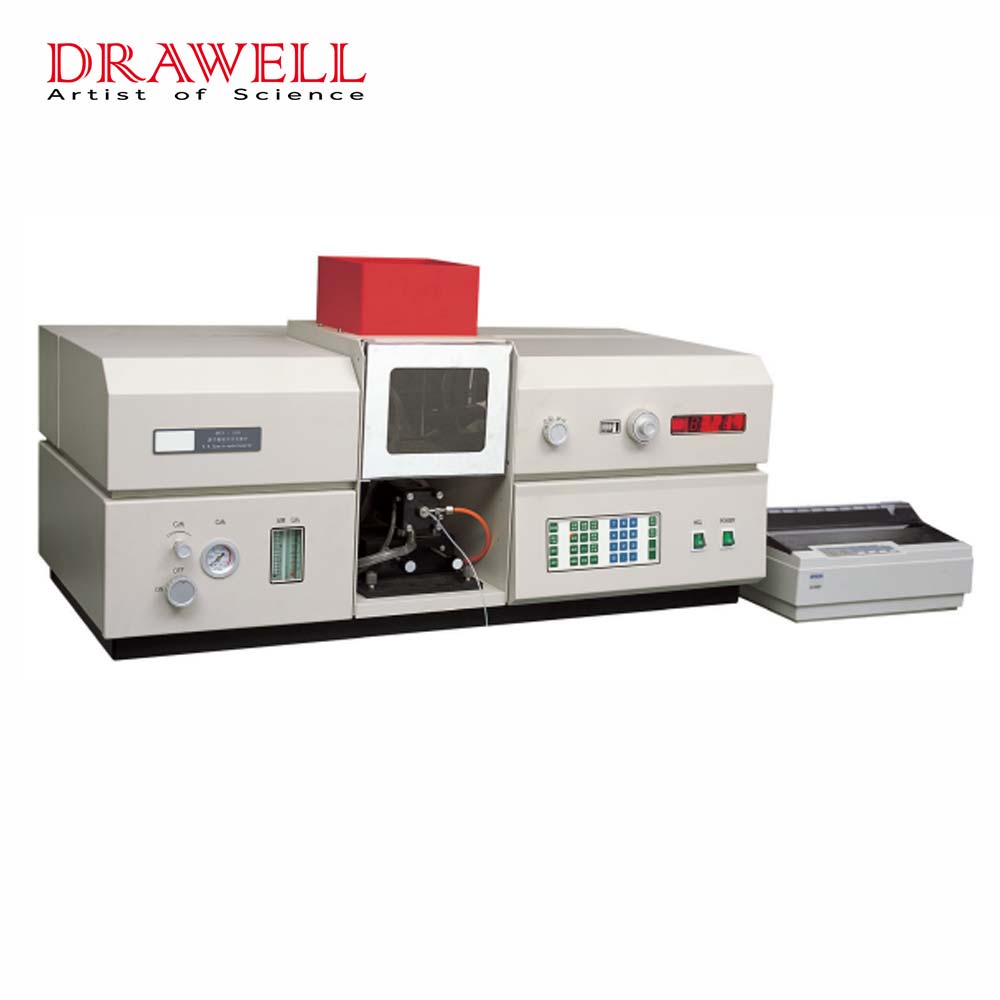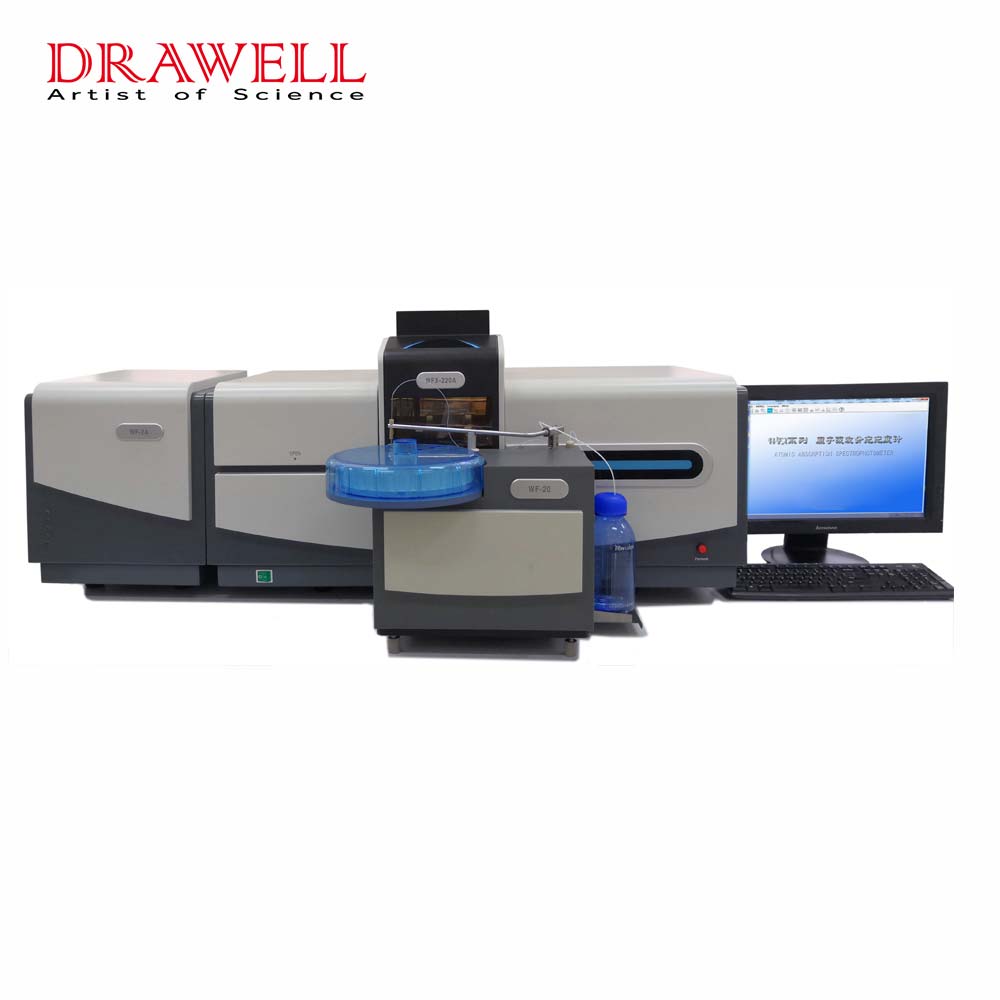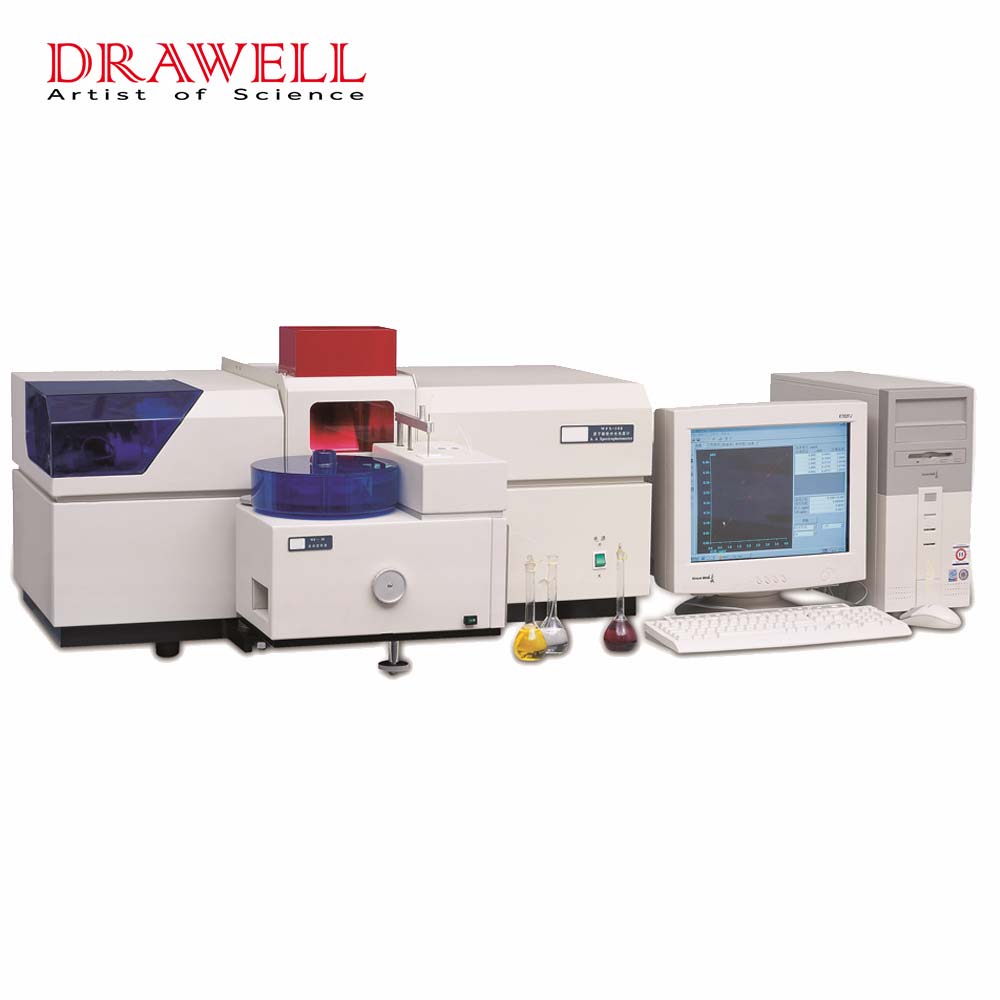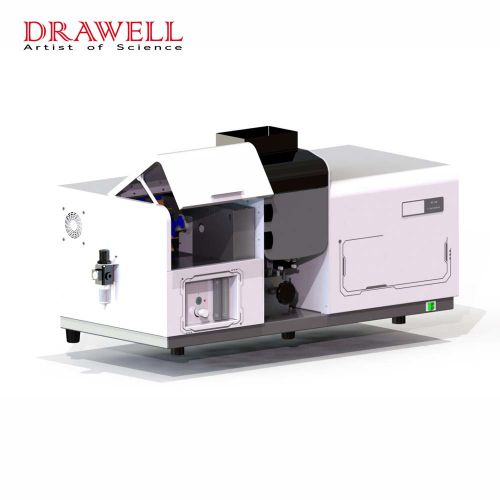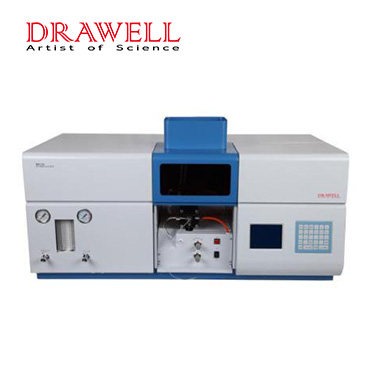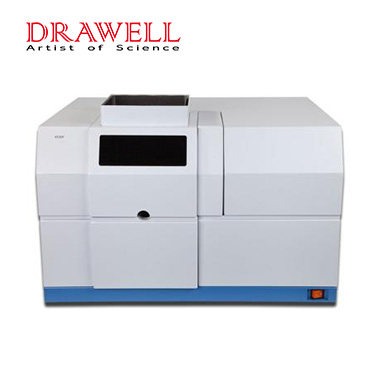The Flame Atomic Absorption Spectrophotometer (FAAS) is a widely used analytical technique for determining the concentration of metal elements in a sample. It utilizes the principle of atomic absorption, where excited atoms in a flame absorb light at specific wavelengths, leading to a decrease in the intensity of the transmitted light. Here we will talk about the type of the flame in FAAS, as well as the applications, pros and cons of FAAS to know more about its importance in analytical.
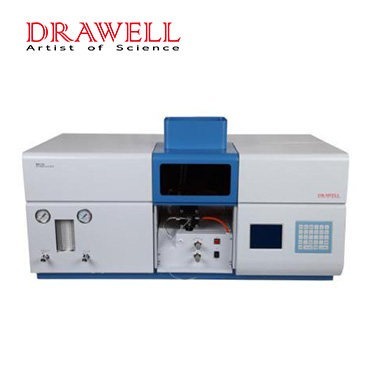
Types of Flames Used in FAAS
In FAAS, there are primarily two main types of flames used:
- Air-Acetylene Flame:
This is the most common type of flame used in FAAS. It is a relatively low-temperature flame (approximately 2300°C) with a high degree of stability. It is ideal for analyzing elements that are easily atomized at lower temperatures, such as sodium, potassium, calcium, and magnesium.
However, it is not suitable for analyzing elements that require higher temperatures for atomization, such as aluminum, chromium, and iron.
- Nitrous Oxide-Acetylene Flame:
This flame is hotter than the air-acetylene flame (approximately 2700°C) and has a more reducing environment. The higher temperature allows for the atomization of more elements, including those that are difficult to atomize with an air-acetylene flame. The reducing environment helps to prevent the formation of refractory metal oxides, which can interfere with the analysis.
However, the nitrous oxide-acetylene flame is more expensive to operate than the air-acetylene flame and requires additional safety precautions due to the use of nitrous oxide.
Choosing the right flame:
The choice of flame depends on several factors, including:
- The elements to be analyzed: Different elements require different temperatures for atomization.
- The concentration of the elements: Higher concentrations may require a lower-temperature flame to prevent ionization.
- The sensitivity required: A higher-temperature flame may be needed for better sensitivity for certain elements.
- The presence of interferences: Some flames may be more susceptible to interferences from other elements.
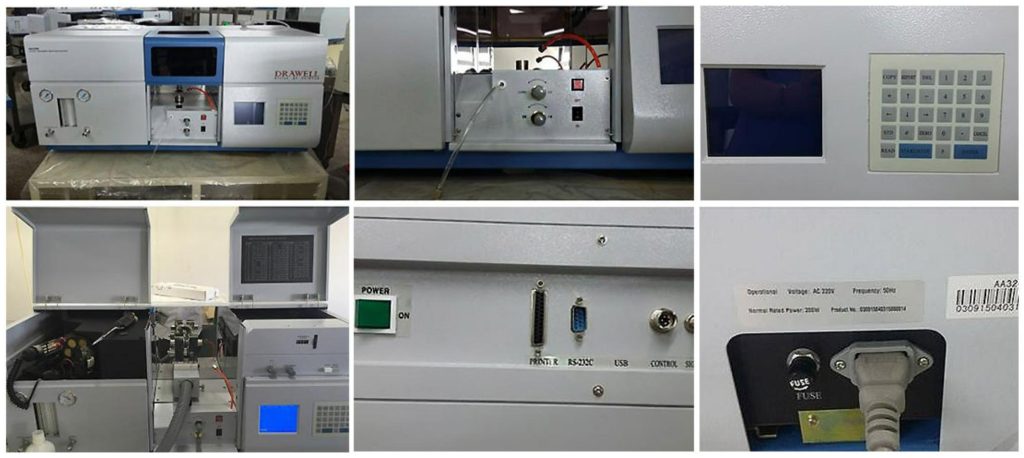
Applications of FAAS
Flame atomic absorption spectrophotometers (FAAS) are versatile analytical instruments capable of analyzing a wide range of samples for their metal and metalloid content. Here are some examples:
Liquid samples:
- Environmental samples: water, wastewater, soil, sediment, air filters, etc.
- Biological samples: blood, serum, urine, tissues, food products, etc.
- Geological samples: rocks, minerals, ores, etc.
- Industrial products: petroleum, lubricants, polymers, etc.
- Pharmaceutical products: drugs, cosmetics, etc.
Solid samples:
- Powdered samples: can be directly analyzed after suitable preparation
- Metals and alloys: can be dissolved in suitable acids and analyzed
Some specific examples of elements that can be analyzed by FAAS include:
Alkali metals: Li, Na, K
Alkaline earth metals: Mg, Ca, Sr
Transition metals: Fe, Cu, Zn, Mn, Ni, Co, Cr, Cd, Pb, etc.
Metalloids: As, Se, Sb, Bi

Advantages and Disadvantages of FAAS
Advantages of Flame Atomic Absorption Spectrophotometer (FAAS):
- High Sensitivity: FAAS can detect very low concentrations of elements, typically in the parts per million (ppm) or even parts per billion (ppb) range. This makes it suitable for analyzing trace elements and contaminants.
- Wide Linear Range: FAAS has a wide linear range, which means that the absorption of light increases proportionally with the concentration of the analyte over a wide range. This allows for accurate quantification of elements over a broad concentration range.
- Multi-Element Analysis: FAAS can be used to analyze multiple elements simultaneously. This is achieved by using different lamps that emit light at different wavelengths. This can save time and resources compared to other analytical techniques.
- Simple Sample Preparation: Sample preparation for FAAS is often relatively simple, involving dissolving the sample in an appropriate solvent. This makes FAAS a good choice for routine analysis of large numbers of samples.
- Relatively Inexpensive: Compared to other analytical techniques, FAAS is relatively inexpensive to purchase and operate. This makes it a practical choice for many laboratories.
Disadvantages of Flame Atomic Absorption Spectrophotometer (FAAS):
- Limited Atomization Efficiency: The efficiency of atomization in flame is relatively low, which means that only a small fraction of the analyte is actually converted into atoms. This can limit the sensitivity of the technique for some elements.
- Matrix Interferences: The presence of other elements in the sample can interfere with the analysis of the analyte. These interferences can be caused by absorption of light by the interfering element or by physical processes that affect the atomization of the analyte.
- Limited Applicability: FAAS is not suitable for the analysis of volatile elements or elements that are difficult to atomize.
- Limited Elemental Range: FAAS is primarily used for the analysis of metals and some non-metals. It cannot be used to analyze organic compounds or elements that do not readily form atoms.
- Environmental Concerns: The use of flammable gases for the flame can be a safety hazard and can also be harmful to the environment.
- Susceptible to Chemical Interferences: The presence of certain chemicals in the sample can interfere with the atomization process, leading to inaccurate results.
Here are some alternative techniques that can be used for analyzing samples with high sensitivity or those containing interfering elements:
- Graphite furnace atomic absorption spectrometry (GFAAS): offers higher sensitivity than FAAS.
- Inductively coupled plasma atomic emission spectrometry (ICP-AES): can analyze a wider range of elements.
- Inductively coupled plasma mass spectrometry (ICP-MS): offers the highest sensitivity of all atomic spectroscopy techniques.
The best technique for analyzing a specific sample will depend on the specific elements of interest, the concentration range, and the presence of any potential interfering elements.
Conclusion
FAAS is a powerful analytical technique that offers a combination of simplicity, sensitivity, and wide applicability. Despite its limitations, it remains a popular choice for the analysis of metal elements in various fields. The choice of flame type and optimization of analytical conditions are crucial for achieving reliable and accurate results.

